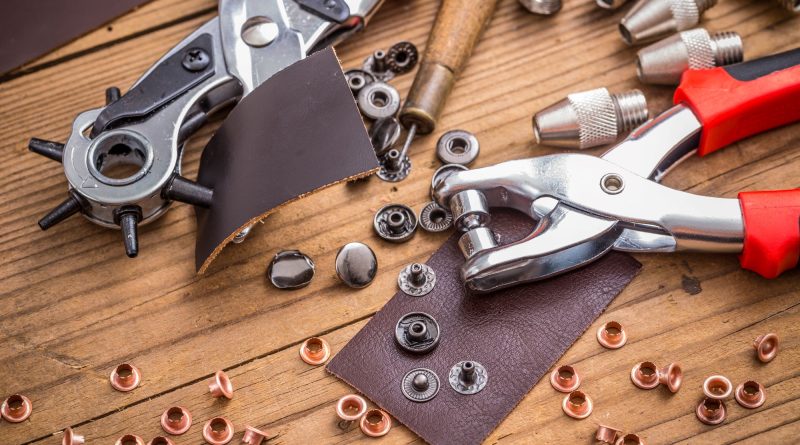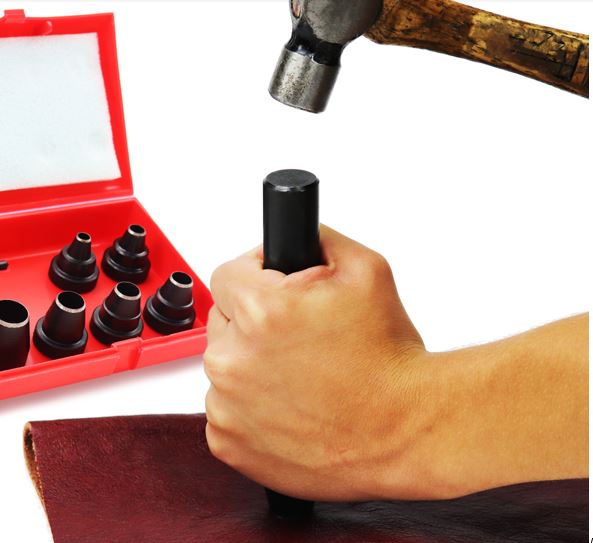Leatherwork For Beginners: 5 Tools And Techniques
Leather is one of the most durable and versatile materials available. Apart from being known to withstand scratches and punctures, it can be repaired many times. In addition, leather has a unique appeal, making it one of the most sought materials for bags, footwear, and clothes.
Suppose you’re planning to learn the basics of leatherwork. In that case, you must know the various tools and techniques every leather artisan works with. Collectively, these essentials can make or break a leather masterpiece. For this purpose, here’s an article to guide you. Read on.
Leatherwork Tools For Beginners
To begin your journey in leathermaking, you need to have the proper tools for the trade. Check out the list of tools you should have:
- Leather Punches
Leather punches are essential in creating precise holes in the leather. While these tools have different versions, most are used in belts, snaps, or grommets. Besides the numerous versions, leather punches come in different sizes and lengths.
Many variations of leather punches can be purchased from tool makers like Maun. Maun says that the best punch tool for leather is a wad punch, because it allows you to interchange different punch sizes quickly, which can make your work more efficient. While most leather punches require mallets, the unique rotary punch has rotating punch tubes with a built-in anvil that can provide various punches.
“Wad Punch Tool by Maun”
- Flat Utility Knife
Flat utility knives are special tools primarily used in skiving and cutting. A chisel-like appearance with a wooden handle characterizes them from the rest. Leather craftspeople use these knives cutting leather, especially around curves. Apart from this, they make straight cuts along the material’s edges.
- Strop And Stropping Compound
Primarily, strop and stropping compound tools keep the precise cutting features of knives. Since leather knives lose their sharpness and precision over time, the need for the leather strop and strop compounds helps to hone the cutting tools.
Apart from sharpening, these tools smooth out and polish the blades too. These processes remove the debris and slow down the tools’ wearing.
- Awl
Stitching awls are used in stitching leather. Typically, these have diamond-shaped blades.
On the other hand, scratch awls are for marking leather to guide the stitch lines and prepare tracing patterns. Patch awls can be used with a straightedge to draw seam allowances and score lines. Both awls can be used in reopening old leather holes.
Nevertheless, only stitching awls are suitable for making new holes as their edges are standard-sized.
- Stitch Groover
Stitch groovers can create guides on which portions to cut because they can cut grooves at adjustable distances. This allows the stitches to sink and lock more deeply beneath the leather’s surface. As a result, the stitching becomes free from snags and abrasion.
Leatherwork Techniques For Beginners
Leatherwork entails different working techniques; it’s a big part of the craft. Read on to learn more about the various leatherwork methods you should take note of:
- Punching
Punching holes is one of the initial steps of the process. It’s necessary for almost all leatherwork, especially when the worker plans to install hardware or create a belt out of material. Before punching holes, mark the spots you’d make holes.
You may use measurement tools to ensure the distance or rotary punching tools to have well-spaced holes. Place the leather on a wooden block or bench before slowly driving the mallet with short strokes if you’re using an awl.
- Skiving
The skiving process refers to thinning leather using a specialty knife, such as the utility flat knife. This technique allows the layering of the material and prevents it from having a bulk, making it challenging to create pockets. Skiving ensures the leather won’t lose quality, especially in bent and folded areas.
- Stitching
Stitching is one way of ensuring that the leather materials are properly machine-sewn or sewn by hand. For this purpose, one can use a home sewing machine, a leather needle, or an awl for hand-sewing before hammering the threads to keep them in place. Keep the leather on a smooth surface so as not to damage its surface when hammering.
- Beveling
Beveling refers to the removal of 90-degree angles of the leather to pave the way for a rounded appearance. Apart from providing a clean look, beveling allows the smooth finishing of the edges to pave the way for easier burnishing too.
- Burnishing
Burnishing is the smoothing and polishing of the leather’s edges using a burnishing tool. For a better approach, leatherworkers use water, gum, or was to smoothen the process. When done correctly, the process leaves a slick appearance to the leather.
Wrapping Up
Leatherwork requires skills and experience to produce a precisely cut and well-decorated piece. Having the right tools and techniques is vital if you’re starting to develop leatherwork skills.
Suppose you’re trying to work on a leather material for the first time. In that case, you may consider referring to this post and making the most of its points. Although it doesn’t guarantee that you’ll master the art of leatherwork right away, it ensures that you’re on the right track in learning the craft.





